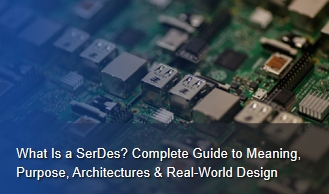Understanding USB, DVI, and HDMI Connectors: A Guide to Choosing the Right Interface for Your Electronics
Introduction: Why Connectors Matter in Electronics
In the fast-paced world of electronics, connectors are often the unsung heroes that make it all work. They serve as the bridge between various electronic components, allowing for the transfer of power, signals, and data that enable devices to function properly. Without connectors, we wouldn’t be able to power our smartphones, connect to high-definition displays, or even transfer data between our computers and peripherals.
Connectors come in many shapes, sizes, and configurations, with each type designed for specific functions and applications. Among the most widely used and recognizable types are USB connectors, DVI connectors, and HDMI connectors. These connectors are essential in everything from everyday consumer electronics to more specialized industrial applications, making them vital components in the modern electronics ecosystem.
Why Connectors Are Critical in Electronics
Connectors are the physical link between different pieces of equipment, allowing devices to "talk" to each other. The role they play goes beyond simple physical connectivity; connectors influence the speed, quality, and reliability of data transfer, power delivery, and signal transmission. As electronics become more complex, the need for connectors that can meet high performance, data throughput, and power demands grows.
When designing or assembling electronic systems, selecting the right connector can directly impact the performance, durability, and ease of use of the final product. For example, using the wrong type of connector can lead to slow data transfers, poor signal quality, and even equipment failure. In contrast, choosing the right connector ensures that your device operates at its optimum performance, reducing downtime and increasing reliability.
USB, DVI, and HDMI: Common Connectors for Different ApplicationsAmong the numerous connector types available, USB, DVI, and HDMI connectors are among the most common. Each of these connectors serves a distinct purpose and is used in different contexts.
USB connectors are primarily used for transferring data between devices (e.g., between a computer and a mouse, keyboard, or storage device) and for charging power-hungry gadgets like smartphones and tablets.
DVI connectors are primarily used for digital video output and are commonly found in computer monitors, graphics cards, and projectors.
HDMI connectors are most frequently used for transferring high-definition video and audio signals between consumer electronics like televisions, Blu-ray players, gaming consoles, and home theater systems.
While these connectors serve different purposes, they share the common objective of allowing seamless communication between devices. The evolution of each connector type over time has helped meet the increasing demands for faster data transfer, higher resolution video, and more powerful power delivery.
Understanding Connector Features and Benefits
Each of these connectors comes with its own set of unique features and advantages, which is why it's important to understand their characteristics before selecting the appropriate one for your project:USB connectors are known for their versatility and ease of use. They come in various types, from standard USB-A to the newer USB-C, which is rapidly gaining popularity due to its fast data transfer rates and reversible design.DVI connectors are highly valued in professional settings, especially for high-resolution displays, as they offer superior video quality without compression, making them ideal for tasks like graphic design, gaming, and video editing.
HDMI connectors are widely used for both video and audio transfer and support high-definition and even 4K and 8K video formats. HDMI connectors are a standard in home entertainment systems, gaming, and media streaming, where high-quality audio and video are essential.
The Importance of Choosing the Right Connector
Choosing the right connector can mean the difference between a system that works seamlessly and one that’s prone to issues such as signal degradation, data loss, or incompatibility. As an electronics designer or hobbyist, it's crucial to understand the specifications of each connector and how they align with your project’s needs. Whether you are designing a custom device, upgrading an existing product, or setting up a multimedia system, selecting the correct connector will ensure that your device performs as expected.
In the next sections, we will dive deeper into the specifics of USB connectors, DVI connectors, and HDMI connectors, comparing their features, benefits, and common uses. Understanding these details will help you make an informed decision about which connector to use, ensuring that your project runs smoothly from start to finish.
1. USB Connectors: Versatile and Reliable
What is USB?
USB (Universal Serial Bus) has become one of the most ubiquitous connectors in modern electronics, playing a pivotal role in connecting computers, mobile devices, printers, cameras, and many other peripherals. Introduced in the mid-1990s, USB was designed to simplify and standardize the connection process for multiple devices, replacing older, more complicated connector types such as serial and parallel ports.Over the years, USB technology has continuously evolved, introducing new connector types and faster data transfer speeds to meet the growing demands of modern devices. Today, USB connectors support everything from high-speed data transfer to powering and charging devices, making them indispensable in nearly every area of consumer electronics.
Types of USB Connectors
There are several types of USB connectors, each designed for specific applications, with varying sizes, power capabilities, and data transfer speeds. The most common USB connector types include:USB Type-A:USB Type-A is the standard rectangular connector found on most computers, laptops, and power adapters. It’s the most recognized USB connector and is typically used for devices like keyboards, mice, USB flash drives, and printers. Despite being one of the oldest designs, it remains widely used due to its simplicity and backward compatibility.
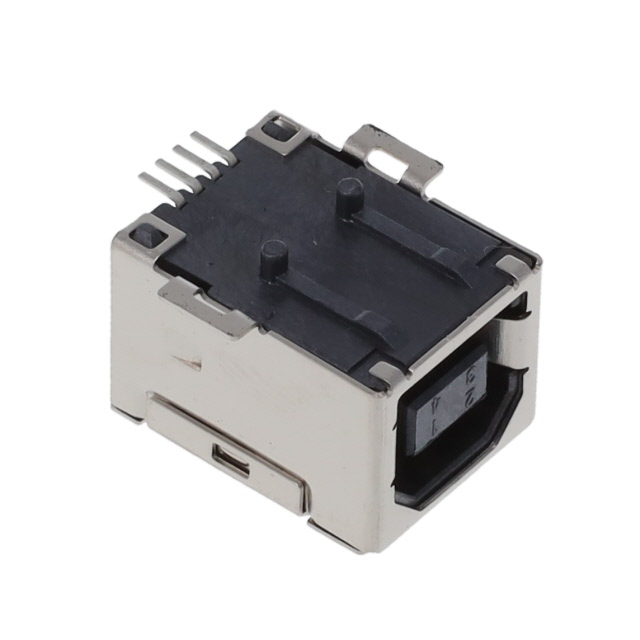
Figure 1: USB Type-A
USB Type-B:Often used in printers, scanners, and other larger peripherals, USB Type-B is a larger, squarer connector compared to Type-A. It’s typically seen in situations where a device needs a more secure and stable connection, such as with desktop printers or external hard drives.USB Type-C:The most recent evolution in USB technology, USB Type-C offers a smaller, reversible connector that supports higher data transfer speeds and power delivery. USB-C connectors are quickly becoming the standard in modern laptops, smartphones, and tablets. In addition to supporting up to 40Gbps data transfer speeds with USB 4.0, Type-C can also deliver power up to 100W, making it suitable for charging power-hungry devices like laptops and large screens.
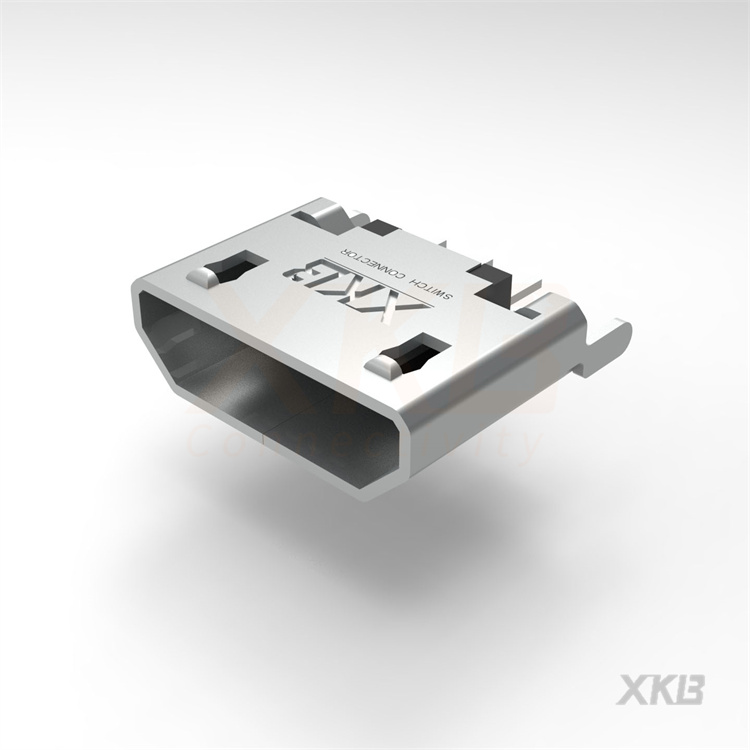
Figure 2: USB Type-C
Mini and Micro USB:Smaller than the Type-A and Type-B connectors, Mini and Micro USB connectors were commonly used in portable devices such as older smartphones, cameras, and GPS units. Although increasingly being replaced by USB-C, these connectors are still found in some older or budget devices. Micro USB, in particular, was widely adopted in smartphones until the arrival of USB Type-C.
Key Benefits of USB Connectors
USB connectors are extremely versatile and provide several key benefits that make them indispensable in today’s electronic landscape:
Versatility:
USB connectors can be used for a variety of tasks beyond data transfer, including charging devices and powering peripherals. This versatility makes them suitable for a wide range of devices, from computers and mobile phones to home appliances and even medical equipment.
High-Speed Data Transfer:
USB technology has evolved significantly over the years to support much faster data transfer speeds. The advent of USB 3.0, USB 3.1, and USB 4.0 has dramatically increased the speed of data transfer, allowing for file transfers at speeds of up to 40Gbps. USB-C, in particular, has become popular in devices requiring high-speed data transfers, such as external SSDs and high-performance peripherals.
Power Delivery:
With the introduction of USB Power Delivery (PD), USB connectors, particularly USB Type-C, can now deliver significant amounts of power to devices. This makes USB Type-C ideal for charging not only mobile phones but also larger devices like laptops, monitors, and even electric vehicles. USB PD allows for up to 100W of power, which is more than enough to charge high-power devices efficiently.
Common Applications of USB Connectors
USB connectors are used across a vast array of devices and industries due to their versatility, ease of use, and wide compatibility. Some of the most common applications include:
Computers and Laptops:
USB connectors are used to connect essential peripherals such as keyboards, mice, printers, and external storage devices. Many devices also rely on USB ports for firmware updates or diagnostics.
Mobile Devices:
USB is commonly used to charge smartphones, tablets, and other portable devices. USB-C, in particular, has become the standard for charging and syncing data on modern smartphones, providing faster charging and data transfer speeds compared to older USB types.
Peripherals:
USB connectors are also found in a wide range of consumer electronics peripherals, such as cameras, game controllers, external hard drives, and USB hubs. They offer plug-and-play convenience, meaning users can easily connect devices without needing additional drivers or software.
Audio/Video Equipment:
Many modern audio and video devices, such as external sound cards, mixers, microphones, and even cameras, utilize USB for both power and data transfer. The versatility of USB connectors allows for simple connections that can carry both power and audio/video signals, making them highly efficient for audiovisual applications.
Choosing the Right USB Connector for Your Project
When selecting USB connectors for your project, there are several factors to consider to ensure compatibility, performance, and future-proofing:
Data Transfer Speed:
Consider the data transfer speed required for your application. For example, if you’re designing a system that involves transferring large files, such as videos or high-quality audio, choosing a USB 3.0 or USB 4.0 Type-C connector will ensure fast data speeds and prevent bottlenecks.
Power Requirements:
Depending on the power needs of your device, a higher power-delivery USB connector (e.g., USB Type-C with PD) may be required. Ensure the connector can handle the power output needed to charge and operate your device efficiently.
Device Compatibility:
USB Type-C is becoming the new standard for most modern devices, but if your project involves older devices or specific peripherals that require older connector types, such as USB Type-A or Mini USB, make sure the connector you choose is compatible with those devices.
Size and Form Factor:
Consider the size constraints of your project. For smaller devices, such as portable electronics, a Mini or Micro USB connector may be ideal due to its compact size. Conversely, for high-performance applications like laptops or gaming systems, USB Type-C provides more flexibility with higher power and data throughput.
In summary, USB connectors are a critical part of modern electronics, offering a versatile, high-speed, and reliable solution for data transfer, charging, and powering devices. With multiple types available, including Type-A, Type-B, Type-C, and Mini/Micro USB, understanding the specifications and applications of each can help you select the right connector for your project. Whether you need fast data transfer, high power delivery, or simple connectivity, USB connectors can meet your requirements across a wide range of devices and industries.
2. DVI Connectors: Digital Video Interface for Displays
What is DVI?
DVI (Digital Visual Interface) is a connector standard primarily designed for transmitting high-quality video signals between devices such as computers and monitors. First introduced in the late 1990s, DVI was developed by the Digital Display Working Group (DDWG) to provide a digital alternative to the older VGA (Video Graphics Array) standard, which transmitted analog signals.
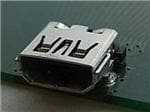
Figure 3: Digital Visual Interface
While HDMI (High-Definition Multimedia Interface) and DisplayPort have since become more dominant in consumer electronics and home entertainment systems due to their ability to transmit both video and audio signals, DVI connectors remain widely used in certain professional environments. For example, DVI is still prevalent in industries such as graphic design, video editing, and gaming, where video quality and resolution are paramount.DVI connectors are known for their ability to deliver crisp, clear digital video with high fidelity, making them a preferred choice for high-resolution displays and graphic-intensive applications.
Types of DVI Connectors
There are two main types of DVI connectors, each suited to different applications and levels of compatibility:
DVI-D (Digital-only):
DVI-D connectors are designed to carry only digital signals, making them ideal for modern digital devices such as LCD monitors, graphic cards, and digital projectors. Since DVI-D does not need to convert digital signals into analog (like VGA does), it is better suited for high-quality video transfer with minimal signal degradation.
DVI-I (Integrated):
DVI-I connectors are more versatile because they support both digital and analog signals. This allows DVI-I to work with older analog monitors (via an adapter) while still supporting the high-quality digital signals used by modern digital displays. The dual functionality makes DVI-I a flexible choice for users who need to connect both legacy ANALOG DEVICES and modern digital equipment.
Key Benefits of DVI Connectors
High-Quality Video:
One of the standout features of DVI connectors is their ability to transmit high-definition video without compression, ensuring that the video signal remains as true to the source material as possible. This is crucial for applications like video editing, graphic design, and gaming, where image quality is paramount. DVI supports HD resolution (up to 1920x1200) and can deliver high-quality video with little or no signal degradation, even over longer cable runs.
Compatibility with Older Equipment:
DVI connectors, particularly DVI-I, offer greater compatibility with older hardware through the use of adapters. For example, a DVI-I to VGA adapter can allow a user to connect a modern digital source to an older analog monitor, extending the life of legacy equipment. This backward compatibility makes DVI a practical choice for environments where older devices need to be integrated with newer technology.
No Compression:
Unlike other video interfaces that may compress video signals, DVI provides uncompressed video transmission. This is especially important for professionals working with high-definition content who need to maintain the integrity of the video signal without any loss of detail.
Common Applications of DVI Connectors
DVI connectors are particularly useful in professional and industrial settings where video quality is critical, and where high resolution or multi-display setups are required. Some of the most common applications for DVI connectors include:
PC Monitors:
DVI is commonly used to connect desktop computers to high-performance monitors, especially in situations that require high-resolution or multiple displays. Graphic-intensive tasks such as 3D modeling, CAD design, and video rendering demand high-quality, high-resolution video output, making DVI an ideal connector for these applications.
Projectors:
Many projectors, particularly in business, education, and event settings, still rely on DVI for connecting to laptops, computers, and media devices. DVI's ability to maintain a high-quality, uncompressed video signal makes it suitable for use in environments where clear, detailed images are essential, such as during presentations or lectures.
Graphics Cards:
High-end graphics cards often feature DVI connectors to provide professional-grade video output. For gamers or digital artists using demanding applications like video games, 3D modeling software, or graphic design programs, the clarity and quality of the video signal delivered via DVI are critical. Graphics cards that support DVI offer enhanced video performance and compatibility with a wide range of monitors and other display equipment.
Multi-Monitor Setups:
DVI connectors are a common choice for multi-monitor setups, particularly in professional environments where users need to expand their workspace across multiple screens. The ability of DVI to support high resolutions and deliver uncompressed video signals without lag makes it suitable for applications like trading, video editing, and other scenarios where multiple monitors are used for productivity or creative purposes.
Why Choose DVI Connectors?
While HDMI and DisplayPort have become more popular in home entertainment systems, DVI connectors continue to be a staple in professional settings due to their uncompressed video transmission and compatibility with both digital and analog devices (in the case of DVI-I). They are particularly valuable in industries that rely on high video quality, such as graphic design, gaming, video editing, and professional video production.
In environments where video resolution and quality are critical, DVI connectors provide a reliable, high-performance solution. Whether you are connecting a high-end graphics card to a monitor or integrating older equipment into a modern system, DVI connectors offer the flexibility and performance needed to maintain image clarity and fidelity.
When choosing DVI connectors for your project, consider the specific video output requirements, the resolution you need to support, and whether backward compatibility with older devices is important. DVI is an excellent choice for systems that demand high-quality video output and versatile connectivity, making it an essential connector in professional and industrial applications.
3. HDMI Connectors: High-Definition Multimedia Interface
What is HDMI?
HDMI (High-Definition Multimedia Interface) is a widely adopted standard for transmitting both high-definition video and multi-channel audio signals over a single cable. Initially introduced in 2003, HDMI revolutionized the entertainment and electronics industries by simplifying connections and providing high-quality digital transmission of both audio and video without compression. It is now the go-to connector for most modern consumer electronics and professional AV equipment.
HDMI connectors are primarily used in devices such as televisions, gaming consoles, laptops, home theater systems, Blu-ray players, and projectors. The popularity of HDMI has grown exponentially due to its versatility, ease of use, and ability to support high-definition content along with high-quality audio.
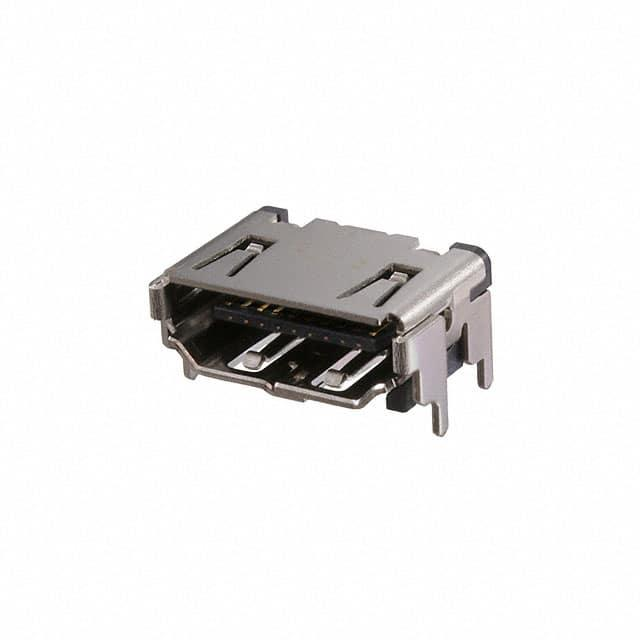
Figure 4: High-Definition Multimedia Interface
Types of HDMI Connectors
There are several types of HDMI connectors, each designed for specific applications based on the size and type of the device:Standard HDMI (Type A):This is the most common HDMI connector and is found on most consumer electronics, including TVs, gaming consoles, Blu-ray players, laptops, and soundbars. The standard HDMI connector supports high-definition video and audio, making it the go-to choice for home entertainment setups.
Mini HDMI (Type C):The Mini HDMI connector is a smaller version of the standard Type A and is often found in tablets, digital cameras, and laptops. It provides the same functionality as the standard HDMI connector but in a more compact form, making it ideal for portable devices.
Micro HDMI (Type D):The smallest HDMI connector, Micro HDMI is typically used in compact devices like smartphones, tablets, and cameras. Despite its small size, it supports the same high-definition video and audio signals as its larger counterparts, allowing high-quality content to be transmitted from mobile devices to external displays.
Key Benefits of HDMI Connectors
High-Quality Audio and Video:
One of the primary advantages of HDMI is its ability to transmit high-definition video and multi-channel audio through a single cable. HDMI supports up to 4K resolution (with HDMI 2.0) and 8K resolution (with HDMI 2.1), providing crisp, clear images and high-fidelity sound. This makes HDMI the standard for entertainment systems that require superior picture and sound quality.
Single Cable Solution:
HDMI simplifies connectivity by combining both audio and video signals into a single cable. This reduces the need for multiple cables and minimizes cable clutter, making it easier to set up and manage AV systems. With HDMI, users no longer need separate cables for video and audio, streamlining the process of connecting devices.
HDCP Compliance:
HDMI supports HDCP (High-bandwidth Digital Content Protection), a security protocol designed to protect digital content from piracy. HDCP ensures that protected content, such as movies, TV shows, and streaming services, can only be displayed on devices that are authorized to view the content. This feature is particularly important for content providers and users who want to maintain the integrity of digital media.
Support for Advanced Features:
HDMI connectors also support a range of advanced features, including 3D video, deep color, and wide color gamut, which are increasingly important for high-end entertainment systems and professional video equipment. The HDMI 2.1 version supports higher refresh rates, dynamic HDR, and eARC (enhanced audio return channel), making it future-proof for next-generation home theater systems and gaming consoles.
Common Applications of HDMI Connectors
HDMI connectors are used in a wide variety of applications across both consumer and professional electronics. Some of the most common uses include:
Home Entertainment:
HDMI is the primary connector for home entertainment systems, connecting Blu-ray players, streaming devices (like Roku, Apple TV, and Chromecast), gaming consoles (such as PlayStation, Xbox), and set-top boxes to TVs and projectors. HDMI supports high-definition and 4K video, as well as surround sound audio, making it ideal for creating immersive home theater experiences.
Computers and Laptops:
HDMI connectors are also used to connect laptops, PCs, and tablets to external monitors or projectors. This is particularly useful in professional environments for presentations, video conferencing, and multi-monitor setups. HDMI’s ability to carry both video and audio makes it perfect for delivering presentations with full sound and high-quality visuals.
Professional AV Equipment:
HDMI is widely used in professional audio-visual (AV) equipment for applications such as conference rooms, digital signage, live events, and broadcasting. In these settings, HDMI allows the seamless transmission of video and audio from devices such as cameras, mixers, and displays. Its versatility in supporting a range of resolutions and audio formats makes it the standard in high-performance AV setups.
Gaming Consoles:
HDMI is the preferred connector for modern gaming consoles like the PlayStation 5, Xbox Series X, and Nintendo Switch. With the rise of 4K and 8K gaming, HDMI 2.0 and HDMI 2.1 are essential to support the higher resolutions and faster refresh rates required for smooth gaming experiences. HDMI also supports Dolby Vision and Dolby Atmos, providing gamers with an enhanced visual and auditory experience.
Streaming and Media Players:
Many streaming devices like Amazon Fire Stick, Roku, and Apple TV use HDMI to transmit content from the internet to your television. With support for high-definition video and audio, HDMI connectors are crucial for delivering content in the highest quality available, including 4K HDR streaming from platforms like Netflix, YouTube, and Disney+.
Choosing HDMI Connectors: Things to Consider
When choosing HDMI connectors for your project or device, it's important to consider several factors to ensure optimal compatibility and performance:Resolution and Refresh Rate:If you're working with 4K or 8K displays, make sure to select HDMI connectors that support the required resolutions and refresh rates. For 4K at 60Hz, HDMI 2.0 is sufficient, but for higher refresh rates (e.g., 120Hz or 240Hz) or 8K resolution, you’ll need HDMI 2.1.
Cable Length:HDMI cables come in various lengths, and the signal quality can degrade over longer distances. For longer cable runs, consider using active HDMI cables (which have built-in signal boosters) or HDMI extenders to maintain signal integrity.
Version Compatibility:Ensure that the HDMI version of your connector matches the requirements of your devices. HDMI 2.0 supports 4K, but for cutting-edge features like high dynamic range (HDR), variable refresh rates, and higher frame rates, you’ll need HDMI 2.1.
Audio Needs:If your project requires high-quality audio output, ensure that the HDMI connector supports multi-channel audio formats like Dolby TrueHD or DTS-HD Master Audio. HDMI is the standard for transmitting surround sound and lossless audio formats in home theaters.
ConclusionHDMI connectors are essential for connecting high-definition video and audio devices in modern consumer electronics and professional AV systems. Their ability to transmit both video and audio signals over a single cable, combined with their support for high-definition and ultra-high-definition content, makes HDMI the preferred choice for a wide range of applications. Whether you’re setting up a home theater, connecting gaming consoles, or integrating professional AV equipment, understanding the types and features of HDMI connectors will ensure you choose the right solution for your needs.
4. Choosing the Right Connector for Your Application
Selecting the correct connector for your project or device is crucial to ensuring that you meet the functional and performance requirements of your application. The type of connector you choose will depend on factors such as the type of data or signal you need to transfer, the level of performance required, and the compatibility with the devices involved.
Here’s a breakdown to guide you in selecting the right connector based on your specific needs:
1. For Video and Audio Transfer: HDMI Connectors
If your application involves transferring high-definition video and multi-channel audio over a single cable, HDMI connectors are the best option. HDMI is designed specifically for multimedia applications and supports both video and audio signals, making it ideal for entertainment systems, gaming consoles, home theater setups, and more.
Key Benefits:Supports 4K and 8K resolution, ensuring crisp, clear video output.Can transmit multi-channel audio (including Dolby TrueHD and DTS-HD), making it perfect for high-fidelity sound systems.Single cable solution: Simplifies wiring by carrying both audio and video signals through one cable.Widely used in consumer electronics like smart TVs, gaming consoles, Blu-ray players, and laptops.
Best Use Cases:Home entertainment: Connecting TVs, soundbars, streaming devices.Gaming consoles: For PlayStation, Xbox, and Nintendo consoles.Multimedia setups: Used in projectors, audio-video receivers, and video conferencing equipment.
2. For High-Performance Displays: DVI Connectors
For applications where high-resolution video quality is critical—especially in professional environments such as graphic design, video editing, and gaming— DVI connectors offer excellent video performance. While HDMI and DisplayPort have largely surpassed DVI in consumer electronics, DVI is still commonly used in industries that require high-quality video output.
Key Benefits:Digital video quality: DVI transmits uncompressed digital signals, ensuring that there is no loss of quality in the video signal.Supports high resolutions: Ideal for 1080p, 4K, and even higher resolutions.Backwards compatibility with VGA (via an adapter), which is useful for connecting older monitors to newer devices.Widely used in graphics cards, monitors, and projectors for professional applications.
Best Use Cases:High-performance displays: Used in desktop computers, gaming monitors, and workstations.Video editing and graphic design: Perfect for industries that demand high-definition video quality.Large-scale projects: Often seen in projectors and display panels in professional settings like business presentations and conferences.
3. For Versatile, High-Speed Data Transfer: USB Connectors
If your application requires a connector that can handle both data transfer and charging for various types of devices, USB connectors are an excellent choice. USB connectors are incredibly versatile and widely used in personal electronics, computers, and peripherals. With different types (such as USB Type-A, USB Type-C, and Micro USB), USB connectors cater to a range of devices, from laptops to smartphones and beyond.
Key Benefits:Versatility: USB connectors are used for data transfer, charging, and power delivery in a wide range of devices.High-speed transfer: With USB 3.0, USB 3.1, and USB 4.0 standards, USB connectors can transfer data at speeds of up to 40 Gbps, depending on the version.USB Type-C supports higher power output, making it suitable for laptops, smartphones, and other high-power devices.Compact size: USB Type-C and Micro USB offer compact and reversible connectors, which are ideal for portable devices like smartphones, tablets, and cameras.
Best Use Cases:Mobile devices: Charging and data syncing for smartphones, tablets, smartwatches, and laptops.Peripheral devices: Connecting keyboards, mice, printers, and external storage drives to computers and laptops.General-purpose data transfer: USB connectors are commonly used for file transfers, backups, and media syncing.
Making the Right Decision
When choosing between USB, DVI, and HDMI connectors, it's important to align your choice with the specific needs of your project. Here are some guiding questions to consider:Do you need high-definition audio and video?If yes, HDMI is the ideal choice. It will handle both audio and video with high fidelity.
Is your project focused on high-resolution displays or professional-grade video output?DVI is an excellent choice for high-performance monitors or graphic-intensive applications where video quality is critical.
Do you need a connector for general-purpose data transfer, charging, or powering devices?USB is your go-to option. It offers versatile, reliable, and fast data transfer along with power delivery for a wide variety of devices.By considering the specific requirements of your application, you can select the appropriate connector that will ensure optimal performance and compatibility with your devices.
5. Why Choose unikeyic Electronics for USB, DVI, and HDMI Connectors
Unikeyic Electronics offers a comprehensive selection of USB, DVI, and HDMI connectors from top-quality manufacturers, ensuring that you receive reliable and durable components for your electronic designs. Their product offerings include connectors from trusted brands such as:Klein Tools: Known for their rugged and high-quality connectors for professional use.
KEYSIGHT Technologies: A leading brand in precision electronics, offering advanced solutions for testing and measurement.
B&K Precision: Renowned for providing reliable, high-performance connectors for industrial applications.
Testo: Specializing in connectors for specialized applications in industrial environments.
Unikeyic Electronics provides excellent customer service, technical support, and competitive pricing, ensuring that your electronic projects are equipped with the best connectors available in the market.
Conclusion: Making the Right Choice for Your Project
Choosing the right connector is essential for ensuring the performance and longevity of your electronic system. USB connectors, DVI connectors, and HDMI connectors each serve specific functions and applications, and understanding the differences between them will help you make the best decision for your project.
For high-quality, reliable connectors, look no further than Unikeyic Electronics, your trusted distributor of USB, DVI, and HDMI connectors from leading manufacturers. Whether you're working on a consumer device, a professional AV system, or a custom electronics project, Unikeyic Electronics has the components you need to succeed.
Related usb/dvi/hdmi connectors Articles RecommendedEnhancing Connectivity: The Role of USB, DVI, and HDMI Connectors in Today’s DevicesHow to Troubleshoot Common Issues with USB, DVI, and HDMI Connectors
Recommended Reading:


